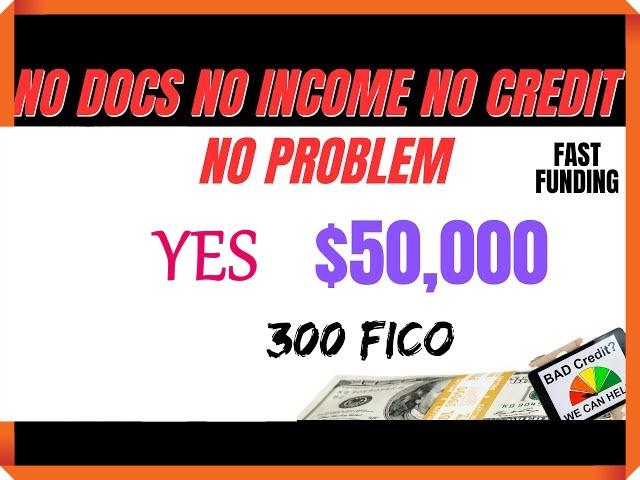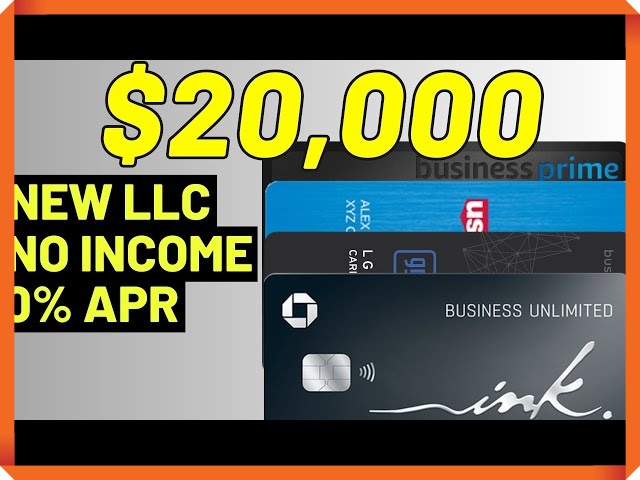Explore the Possibilities: Loan Options When Income Proof is Scarce No Credit or Bad Credit. Securing financing can be a daunting task, especially when traditional lenders demand extensive documentation that you may need to have. However, alternative loan options cater to those with limited income proof or poor credit histories. This comprehensive guide will explore six different loan types and highlight reputable lenders that can help you access the funds you need, even if your financial situation doesn’t fit the typical mold.
Table of Contents
Payday Loans No Credit or Bad Credit : A Quick Fix, but Proceed with Caution
Payday loans are short-term, small-amount loans with high interest rates and fees. While they may provide a quick solution in an emergency, it’s crucial to understand the potential drawbacks. These loans should be considered cautiously, as the consequences of not repaying can be severe. If you choose to explore payday loans, research lenders thoroughly and understand the terms and conditions before signing on the dotted line.
Title Loans: Leveraging Your Vehicle’s Value
You may qualify for a title loan if you own a car outright and have no outstanding loans. These loans use the value of your vehicle as collateral, allowing you to borrow money while retaining possession of your car. However, it’s important to note that the lender has the right to seize your vehicle if you cannot repay the loan. Title loans should be carefully considered, as the consequences of defaulting can be severe.
Pawn Shop Loans: Collateral-Based Financing
Pawn shop loans provide another option for those in need of quick cash. You can secure a loan from a pawn shop by using valuable items as collateral. Unlike title loans, where you keep possession of your car, pawn shops will hold onto the item you use as collateral until the loan is repaid. If you cannot repay the loan, the pawn shop retains the item, which can be a difficult trade-off to consider.
Personal Loans with a Co-Signer: Leveraging Trusted Relationships
If you have a friend or family member with a strong credit history, they may be willing to co-sign a personal loan on your behalf. This can significantly improve your chances of loan approval, as the lender will consider the co-signer’s creditworthiness when evaluating the loan. However, it’s crucial to ensure that you and your co-signer fully understand the implications and risks involved, as the co-signer will be equally responsible for repaying the loan.
Peer-to-Peer Lending: Connecting Borrowers and Investors
Peer-to-peer (P2P) lending platforms connect individual investors with borrowers seeking loans. These platforms may have more relaxed requirements regarding proof of income, as the decision to lend ultimately rests with the individual investor. However, it’s essential to research the platform thoroughly, understand the terms and conditions, and ensure you’re comfortable with the repayment schedule and interest rates.
Crypto-Backed Loans: Leveraging Your Digital Assets
If you’ve accumulated cryptocurrency, such as Bitcoin, some lenders may offer loans based on the value of your digital holdings. This allows you to access funds without having to sell your crypto assets, which can be advantageous if you believe the value of your cryptocurrency will continue to rise. As with any loan, it’s crucial to carefully review the terms and conditions to ensure that the loan aligns with your financial goals and risk tolerance.
Navigating the Landscape: Lender Recommendations
Now that you have a basic understanding of the different loan options available let’s dive into some specific lender recommendations that may assist you, even if you need proof of traditional income or have a less-than-stellar credit history.
Payday Loans
- Opploans – Offers a high maximum loan amount of $4,000.
- Check Into Cash – Provides the unique option to apply online and pick up cash in-store.
- CashNetUSA – Known for quick approvals and fast funding.
- Ace Cash Express – Offers a 72-hour satisfaction guarantee if you change your mind and return the funds.
- LendUp – Renowned for fast application processing and quick approvals.
- Check City – Offers multiple repayment options, including electronic withdrawals from your bank account and paying by debit card over the phone.
No-Documentation Loans
- Lendio – Partners with over 75 lenders and offers various financing options, even for those with bad credit.
- OnDeck – Provides short-term loans and lines of credit for small businesses, with same-day funding.
- Backed – Offers working capital loans and is known for quick application processing, with a reputation for considering fair credit and only requiring one year in business.
- BlueVine – Provides fast and less expensive business lines of credit, with no-doc applications, a low 8% starting APR, and a 24-hour turnaround.
- FundThrough – Offers a no-paperwork invoice factoring and financing option, with up to 100% advance rates.
- eCommerce Business Loans—These loans provide funding to cover up to 16 weeks of inventory for most types of e-commerce businesses. They are considered a true no-doc loan, with funds sent directly to the manufacturer.
Remember, while these lenders may not require extensive documentation, they may still perform a credit check or require proof of your ability to repay the loan. It’s crucial to carefully review the terms and conditions of any loan before signing on the dotted line.
No Credit vs. Bad Credit: Understanding the Difference
Even if you have reliable income but no credit history, you will be considered a risk because you don’t yet have a track record. A lack of credit can result in:
- I need help finding a place to live.
- Higher utility deposits.
- Fewer options in case of emergency expenses.
- Higher interest rates (or getting turned down) if you want to take out a loan.
A bad credit score—often defined as a score below 630 on a 300-850 scale—makes lenders reluctant to extend credit because you have made major credit mistakes.
Examples of Bad Credit Behavior:
- Paying late.
- Using more than 30% of your credit limit.
- Letting an account go to collection.
- A past bankruptcy.
It is smart to focus on improving if you have either no credit or bad credit. The strategies you use will differ depending on your situation.
Improving No Credit:
- Open a Credit Account: Consider applying for a secured credit card or becoming an authorized user on someone else’s account.
- Pay on Time: Always pay your bills on time to build a positive payment history.
- Keep Balances Low: If you use a credit card, keep your balance low relative to your limit.
Improving Bad Credit:
- Pay Off Debt: Focus on paying down existing debt to reduce your credit utilization ratio.
- Make Timely Payments: Ensure all future payments are made on time.
- Dispute Errors: Regularly check your credit report for errors and dispute any inaccuracies.
By understanding the differences between no credit and bad credit and taking the right steps to improve your credit profile, you can increase your chances of securing better financial opportunities in the future.
In conclusion, navigating the world of no-documentation loans can be daunting, but with the correct information and guidance, you can unlock the funding your business needs, even if your financial situation doesn’t fit the traditional mold. By exploring the various loan options and lenders outlined in this guide, you can take the first step toward securing the capital you require to achieve your business goals.
F.A.Qs
What Does It Mean to Have No Credit History?
If you check your credit profile and see “no credit score” or “no credit history,” you are considered unscorable or invisible credit. These terms can sound alarming, but they don’t indicate something negative. Instead of having a zero credit score, you don’t have a score at all.
Why Do I Have No Credit History?
There are several common reasons why you might not have a credit history:
- No Credit Accounts Reporting: You don’t have any credit accounts reporting to the three major credit bureaus (Experian, Equifax, and TransUnion).
- Inactive Credit Usage: You haven’t used any credit for long.
- New Credit Account: You’ve recently opened your first credit account but haven’t been active enough to generate a score.
- New Adult or Recent Immigrant: You’ve recently become an adult or immigrated to the country, so you haven’t had the chance to build credit yet.
How Common Is It to Have No Credit History?
It’s quite common. A 2021 study by FICO, the most widely used credit scoring model, found that nearly 53 million Americans are unscorable.
What Should I Do If I Need Credit History?
If you find yourself without a credit history, here are some steps to help you build one:
- Open a Credit Account: Apply for a secured credit card or become an authorized user on someone else’s account.
- Pay Your Bills on Time: Consistently pay all your bills on time to establish a positive payment history.
- Keep Balances Low: If you have a credit card, keep your balance low relative to your credit limit.
- Monitor Your Credit Report: Regularly check your credit report to ensure the information is accurate and up-to-date.
What Is Considered Bad Credit?
Under the FICO scoring model, a credit score between 300 and 579 is considered poor. You’ll move into the fair credit category if you improve your score to the 580-669 range. A score above 670 is considered good.
Though less commonly used, the VantageScore model classifies credit scores similarly. A very poor VantageScore ranges from 300 to 499, while a poor score is between 500 and 600. Scores between 601 and 660 are considered fair, and good credit begins at 661.
Why Do I Have Bad Credit?
Having a low credit score is typically the result of several negative marks on your credit report. Common factors include:
- Late or Missed Payments: Failing to pay bills on time.
- Bankruptcy or Debt Defaults: Filing for bankruptcy or not repaying debts.
- Too Many Hard Inquiries: Numerous hard credit checks in a short period.
- High Credit Utilization: Using a large percentage of your available credit.
Often, a combination of these factors contributes to a poor credit score. Review your credit report from each bureau to identify what is affecting your credit. If none of these issues apply, check for possible fraud or incorrect information that might lower your score.
How Can I Improve My Bad Credit?
If you have bad credit, here are steps to improve it:
- Pay On Time: Make sure to pay all your bills on time.
- Reduce Debt: Work on paying down existing debt.
- Limit Hard Inquiries: Only apply for a few new credit accounts quickly.
- Monitor Credit Utilization: Keep your credit card balances low.
These actions allow you to gradually improve your credit score and move into a better credit category.




